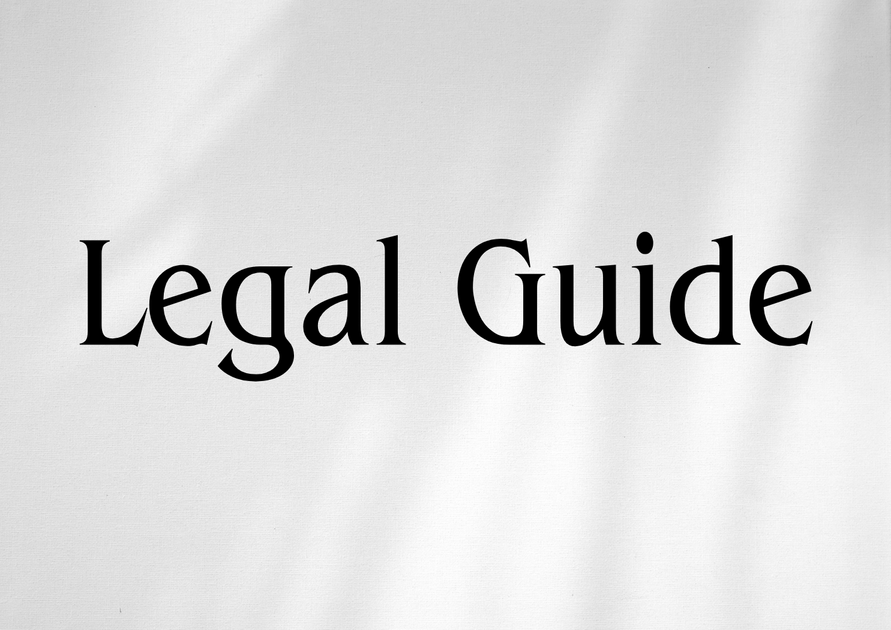Introduction
The financial landscape in the United Arab Emirates (UAE) has witnessed major regulatory shifts in recent years, positioning the nation at the forefront of global banking innovation and consumer protection. As the UAE continues its march toward becoming a leading international financial center, the rights of borrowers have come under increased scrutiny—both to foster credit growth and ensure equitable, responsible lending practices. This article provides an in-depth advisory for businesses, executives, legal practitioners, and HR managers on the legal rights of borrowers under UAE law, particularly in the context of recent updates to key statutes such as Federal Decree Law No. 14 of 2018 Concerning the Central Bank and Regulation of Financial Institutions and Activities, and the 2022-2025 legal reforms. Drawing upon authoritative UAE government sources, this briefing offers practical analysis, comparative insights, compliance recommendations, and tangible case scenarios, leaning on the standards expected of a leading legal consultancy firm.
In 2025, the evolving regulatory environment—marked by new consumer protection mandates, digital banking protocols, and intensified compliance enforcement—has elevated the importance of understanding borrower rights. For businesses and executives, compliance is not only a legal risk-mitigation imperative but also a corporate reputation priority. As such, mastering these legal developments is essential for responsible lending, robust contractual negotiations, and safeguarding organizational interests.
Table of Contents
- Overview of Key UAE Laws Governing Borrower Rights
- Fundamental Legal Rights of Borrowers in the UAE
- Transparency and Fair Treatment: Legal Duties of Lenders
- Case Studies and Practical Scenarios
- Key 2025 Legal Updates and Comparison
- Risks of Non-Compliance and Strategic Compliance Solutions
- Conclusion and Forward-Looking Strategies
Overview of Key UAE Laws Governing Borrower Rights
Legal Framework: Central Bank Authorities and Lending Regulation
The primary statutes governing lending, borrower rights, and dispute resolution in the UAE include:
- Federal Decree Law No. 14 of 2018 Concerning the Central Bank and Regulation of Financial Institutions and Activities: The cornerstone legal instrument for the regulation of monetary policy, banking practices, and consumer protection.
- UAE Civil Code (Federal Law No. 5 of 1985): Provides broad principles affecting civil and contractual relationships, including obligations, loan contracts, and default remedies.
- Central Bank Consumer Protection Regulations (CPR) (Circular No. 8/2020 and subsequent amendments): Mandates fair treatment, informed consent, and dispute resolution mechanisms.
- Federal Decree Law No. 20 of 2018 on Anti-Money Laundering and Countering the Financing of Terrorism and Illegal Organizations: Impacts due diligence, reporting, and the obligations of financial institutions toward loan customers.
- Supplementary Guidelines from the Ministry of Justice and updates per the Federal Legal Gazette (2022–2025).
Recent regulatory reforms, especially those targeting digital lending, fintech, and micro-lending, have further clarified and expanded the rights of borrowers—driving higher standards of transparency, contract certainty, and lawful collection practices.
Fundamental Legal Rights of Borrowers in the UAE
Right to Full Disclosure and Informed Consent
UAE law requires licensed lenders to provide borrowers with transparent, comprehensive information before signing any credit contract. This is enshrined in Articles 121–126 of the Central Bank Consumer Protection Regulations, which mandate:
- Clear, written disclosure of all loan terms, including principal, interest rates, fees, and repayment schedules.
- Provision of a key facts statement or summary sheet in both Arabic and English.
- Access to necessary pre-contractual documentation and a reasonable period to review terms.
This legal framework ensures borrowers are not subject to unfair or hidden clauses and empowers them to make informed financial choices. Non-compliance by lenders can result in regulatory sanctions and contract invalidation.
Right to Fair and Equitable Treatment
Article 120 of the Central Bank Consumer Protection Regulations and Article 246 of the UAE Civil Code require lenders to uphold good faith and fairness throughout the lending lifecycle. Key protections include:
- No discrimination in lending decisions based on nationality, gender, or religion.
- Equal access to complaint procedures and dispute resolution channels.
- Protection from aggressive sales tactics and misrepresentation.
Right to Privacy and Information Security
With the advent of digital banking, the treatment of borrower data is subject to heightened regulation. Compliance is mandated under:
- Federal Decree Law No. 45 of 2021 on the Protection of Personal Data (PDPL), which gives borrowers the right to access, correct, and restrict processing of their loan-related personal information.
- Central Bank Circulars on data confidentiality and cross-border data flows (notably Circular No. 24/2022).
Right to Prepayment and Early Settlement
Borrowers are legally entitled to repay debts ahead of maturity, subject only to reasonable administrative fees as capped under current Central Bank guidelines (typically not exceeding 1% of the repaid principal, or AED 10,000, whichever is lower, as per updates in 2022-2023).
Right to Access Dispute Resolution and Legal Recourse
Under Central Bank Consumer Protection mechanisms, borrowers have access to both internal complaint handling units and external regulatory review. Litigation rights under the UAE Civil Procedures Law (Federal Law No. 11 of 1992, as amended), as well as recourse to the Central Bank Dispute Resolution Committee, are safeguarded. Timelines for complaint handling and enforcement actions are specified to ensure prompt, effective resolution.
Transparency and Fair Treatment: Legal Duties of Lenders
Contract Clarity and Consumer Understanding
Article 6 of the Central Bank Consumer Protection Regulations demands that all consumer loan contracts be drafted in clear, simple language and segregate core contract terms (principal, rate, period, fees) from secondary clauses. Failure to do so may render terms unenforceable. Lenders are required to:
- Use standardized contract templates vetted by the Central Bank and the Ministry of Justice.
- Disclose total cost of borrowing (annual percentage rate – APR) and compare it with market benchmarks.
- Warn borrowers of variable-rate loan risks and associated triggers for rate changes.
Visual Aid Suggestion: Placement of a sample loan contract transparency checklist table to illustrate compliance best practices.
| Checklist Item | Status | Reference |
|---|---|---|
| Disclosure of APR | Mandatory | CPR Art. 18 |
| Clear language (Arabic/English) | Mandatory | CPR Art. 12 |
| Pre-contract summary provided | Mandatory | CPR Art. 13 |
| Fee schedule attached | Mandatory | CB Circular 8/2020 |
No Unfair Terms and Unilateral Amendments
Updates effective from 2023 further restrict lenders from inserting unreasonable penalty clauses, or amending key terms unilaterally without clear borrower consent. Any material change (such as increase in interest rate or change in repayment terms) requires prior notice and borrower agreement or, in certain cases, a right to rescind without penalty.
Case Studies and Practical Scenarios
Case Study 1: SME Loan Prepayment in 2023
Situation: An SME client received an AED 5 million working capital facility in 2022 from a UAE bank. Business conditions improved, enabling a full early repayment in mid-2023. The contracted prepayment fee was 2% of principal.
Legal Analysis: The revised Central Bank directives (Circular No. 12/2023) restrict prepayment penalties to a maximum of 1% of repaid principal, capped at AED 10,000. Any excess fee is unenforceable, and the borrower is entitled to refund of the difference. The client’s legal team successfully invoked the amended regulation, reducing the prepayment fee liability from AED 100,000 to AED 10,000.
Case Study 2: Consumer Dispute over Inaccurate Disclosure
Situation: An individual borrower alleged the interest computation described in her loan offer was misleading and filed a complaint with the lender’s in-house disputes officer. The complaint escalated to the Central Bank.
Legal Analysis: Central Bank guidelines require written, unequivocal explanations of all cost components and repayment structure. The bank was found non-compliant, resulting in restitution of overcharged amounts and official censure. This underscores the operational risk for lenders who neglect disclosure duties, and highlights the robust recourse available to borrowers.
Key 2025 Legal Updates and Comparison
Evolving from Legacy Norms: 2018–2025 Law Comparison
| Aspect | Pre-2018 Law | 2025 Updates |
|---|---|---|
| Disclosure Requirements | General contractual obligation; no standardization | Standardized format, mandatory pre-contract sheets, dual language (CB Central Bank CPR) |
| Data Protection | No explicit data privacy framework | PDPL implementation; consent and correction rights |
| Dispute Resolution | Litigation or ad hoc committee | Mandatory in-house complaint units, CB mediation |
| Early Settlement Fees | Largely contractual; few restrictions | Strict maximum cap (CB Circular No. 12/2023) |
| Loan Contract Amendments | Permitted on general notice | Material changes require explicit consent or right of rescission (CPR Art. 18A) |
Practical Implications for Borrowers and Lenders
The 2025 legal reforms have significantly shifted the balance in favor of stronger borrower protection and proactive compliance requirements for lenders. These changes, while imposing higher standards, bring the UAE banking sector in line with global best practices—enhancing institutional accountability, consumer trust, and overall financial stability.
Risks of Non-Compliance and Strategic Compliance Solutions
Enforcement Risks and Regulatory Penalties
- Fines up to AED 10 million for severe breaches (as established by Federal Decree Law No. 14 of 2018 and CB Circular No. 16/2022).
- Potential contract invalidation or inapplicability of lender-favorable clauses.
- Obligation to compensate borrowers for overcharged amounts or illegal collection.
- Reputational risk through adverse regulatory decisions published in the Federal Legal Gazette.
| Non-Compliance Type | Maximum Penalty | Risk Profile |
|---|---|---|
| Lack of Disclosure | AED 2 million | Contract unenforceable, refund risk |
| Unlawful Data Processing | AED 5 million | Data breach reputational harm |
| Improper Prepayment Fee | Mandatory refund + AED 500,000 | Customer sanctions |
Compliance Strategies and Best Practices
- Adopt contract templates and disclosure formats approved by the Central Bank and reviewed by legal counsel.
- Establish robust internal compliance and dispute resolution units, with clear escalation pathways for borrower complaints.
- Undertake periodic compliance audits with reference to Federal and Central Bank directives.
- Mandate regular staff training on consumer protection, especially regarding data privacy and fair collection practices.
Visual Aid Suggestion: Compliance checklist flowchart summarizing onboarding, periodic review, documentation, and complaint handling steps for lending institutions.
Conclusion and Forward-Looking Strategies
The evolving body of UAE law governing borrower rights in 2025 is transforming the contractual and operational landscape for lenders and borrowers alike. The shift toward greater transparency, fairness, and data security places a premium on compliance and proactive risk management. For organizations and executives, staying abreast of these developments is essential not only to avoid legal pitfalls but also to optimize commercial strategies in a more consumer-centric financial market.
Looking forward, regulatory alignment with international standards—coupled with ongoing legal reforms expected to be issued by the Ministry of Justice and the Central Bank—promises to further elevate the UAE’s status as a safe, dynamic, and predictable environment for credit and investment. Organizations are strongly advised to routinely review contractual practices, invest in legal training, and leverage specialized legal counsel to ensure continued adherence with Federal law, regulatory updates, and best practices. By doing so, they position themselves not only for risk resilience but for long-term market leadership in the UAE’s vibrant financial ecosystem.



